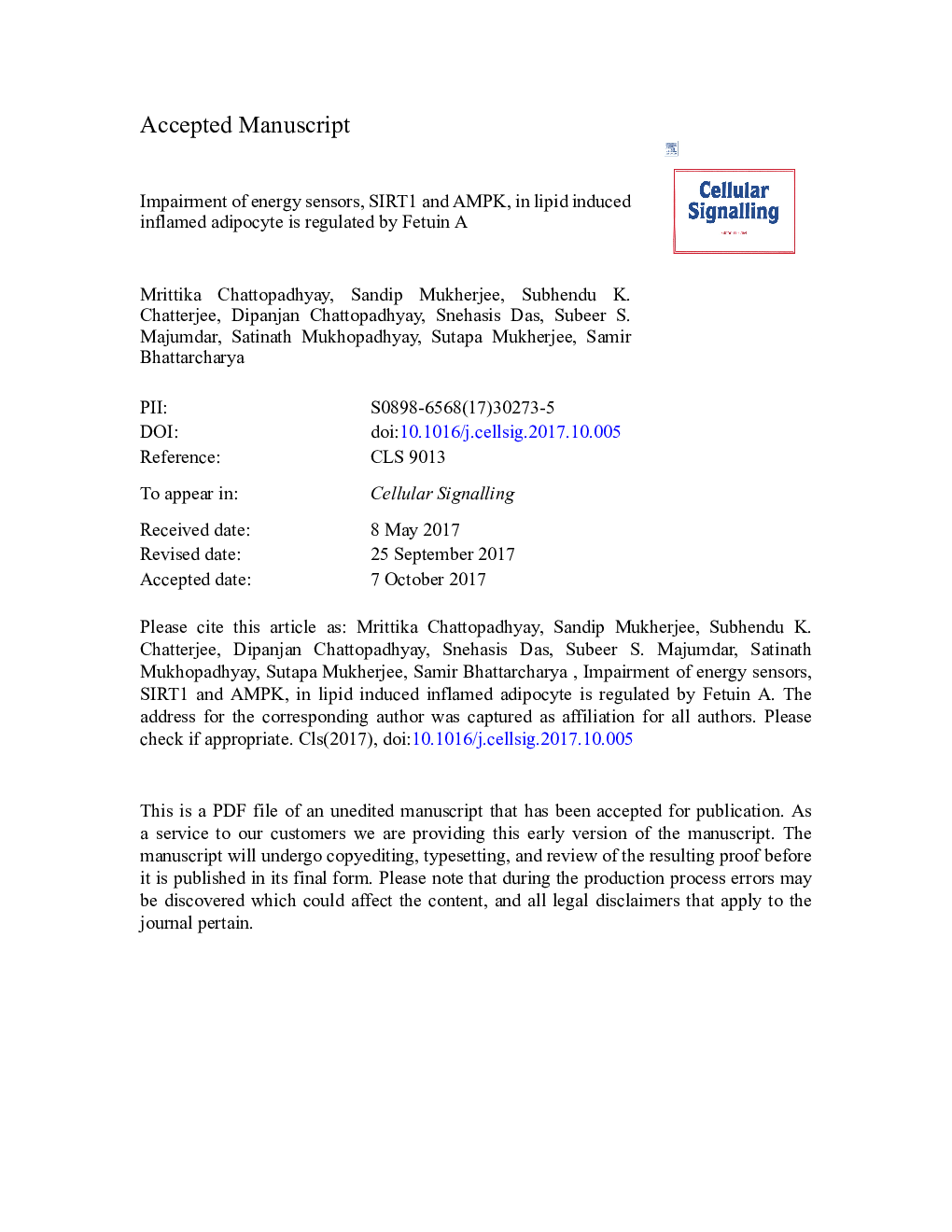| Article ID | Journal | Published Year | Pages | File Type |
|---|---|---|---|---|
| 8309043 | Cellular Signalling | 2018 | 25 Pages |
Abstract
Although several reports demonstrated that accumulation of excess lipid in adipose tissue produces defects in adipocyte which leads to the disruption of energy homeostasis causing severe metabolic problems, underlying mechanism of this event remains yet unclear. Here we demonstrate that FetuinA (FetA) plays a critical role in the impairment of two metabolic sensors, SIRT1 and AMPK, in inflamed adipocytes of high fat diet (HFD) mice. A linear increase in adipocyte hypertrophy from 10 to 16 week was in tandem with the increase in FetA and that coincided with SIRT1 cleavage and decrease in pAMPK which adversely affects PGC1α activation. Knock down (KD) of FetA gene in HFD mice could significantly improve this situation indicating FetA's contribution in the damage of energy sensors in inflamed adipocyte. However, FetA effect was not direct, it was mediated through TNF-α which again is dependent on FetA as FetA augments TNF-α expression. FetA being an upstream regulator of TNF-α, its suppression prevented TNF-α mediated Caspase-1 activation and cleavage of SIRT1. FetA induced inactivation of PGC1α due to SIRT1 cleavage decreased PPARÏ, adiponectin, NRF1 and Tfam expression. All these together caused a significant fall in mitochondrial biogenesis and bioenergetics that disrupted energy homeostasis resulting loss of insulin sensitivity. Taken together, our findings revealed a new dimension of FetA, it not only induced inflammation in adipocyte but also acts as an upstream regulator of SIRT1 cleavage and AMPK activation. Intervention of FetA may be worthwhile to prevent metabolic imbalance that causes insulin resistance and type 2 diabetes.
Related Topics
Life Sciences
Biochemistry, Genetics and Molecular Biology
Biochemistry
Authors
Mrittika Chattopadhyay, Sandip Mukherjee, Subhendu K. Chatterjee, Dipanjan Chattopadhyay, Snehasis Das, Subeer S. Majumdar, Satinath Mukhopadhyay, Sutapa Mukherjee, Samir Bhattarcharya,
